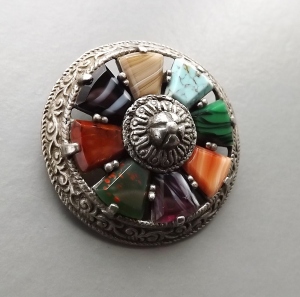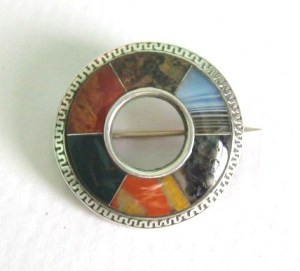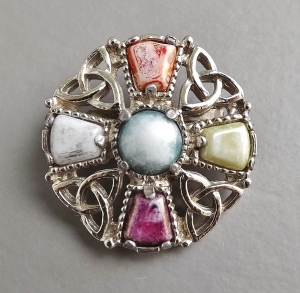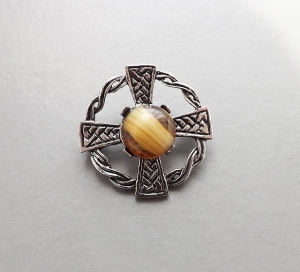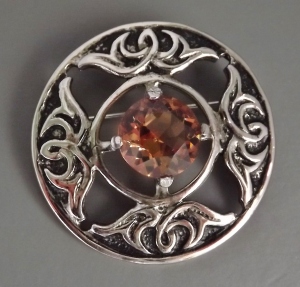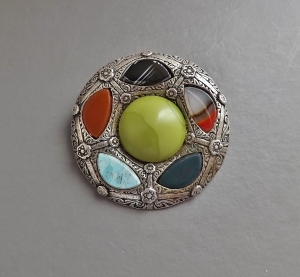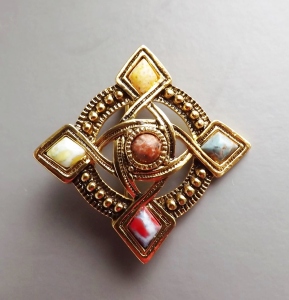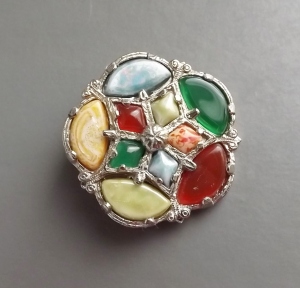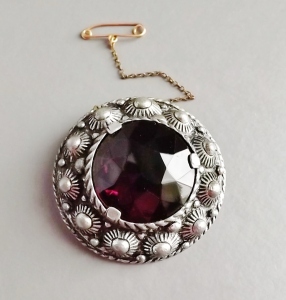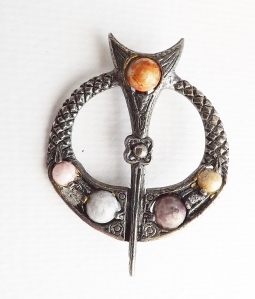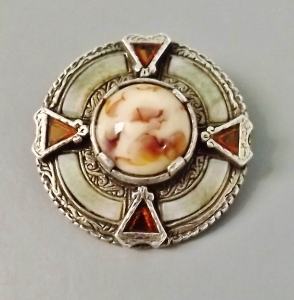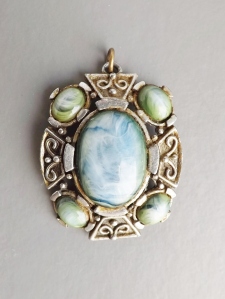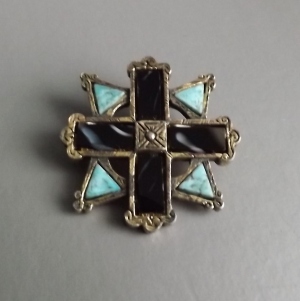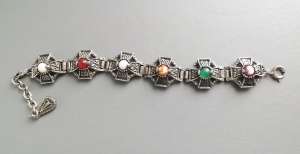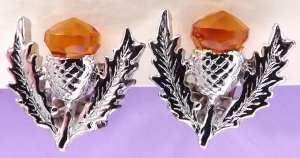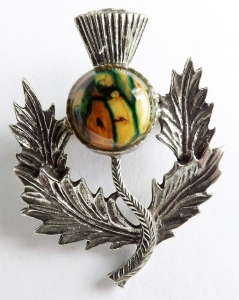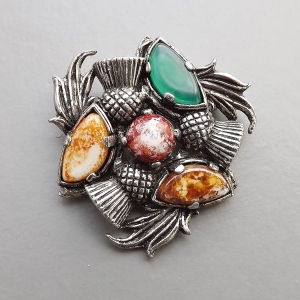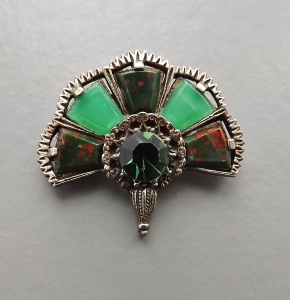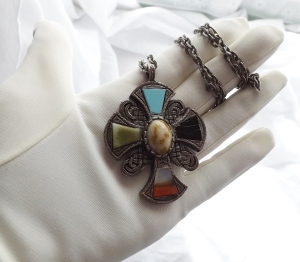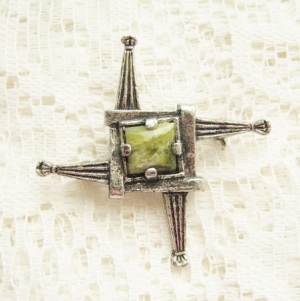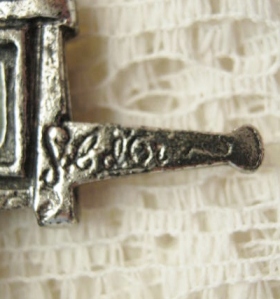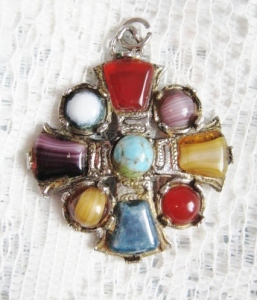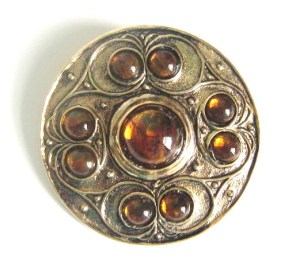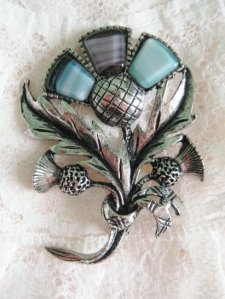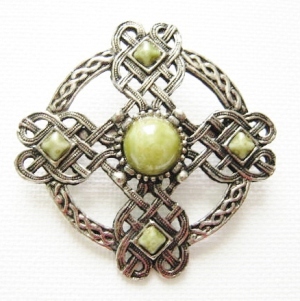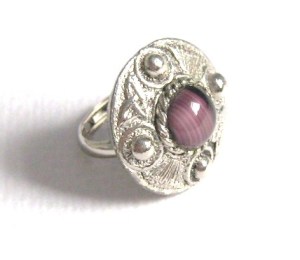It’s been a while since we’ve had a Q & A session! So here are the latest jewel queries and questions that have been asked (and if you’d like to ask a question please get in touch or leave a message in the comment section below – no question is too small or far out 🙂
Readers Q & A:
Can you share any tips to find beaded necklaces on Ebay?
My first tip would be to write in the search box both ‘bead’ and ‘beaded’, as they’ll bring up more results. Also, do use the ‘Item Specifics’ area on the left hand side of the page – there are tick box lists to help narrow down your search and help filter out 1000s of unhelpful listings, including excluding International sellers (eg, if you need a necklace quickly and can’t wait for longer shipping from overseas).
Be as detailed and specific as you can; what is it that you’re looking for? Glass beads? Plastic? Faux pearl or cultured? Gold colour or bronze metal? Long or choker? Write it in the search box, don’t be afraid to use lots of words – sometimes I’ll type in a long sentence that over fills the box! If listing results are coming up that are no good for you (eg, you are searching for sparkling crystal beaded necklaces, but you’re having to go through hundreds of adverts for wooden religious rosary’s), simply put a dash mark: – minus mark directly in front of the exact word you wish to remove; so if I wanted to search for a white glass bead necklace but didn’t want to see any wooden rosary’s, I would type in the search bar:
White bead glass necklace –rosary –rosary’s –wood –wooden
and this should remove all wood rosary listings from your search. Finally, some people swear by searching for miss-spelt listings, so in your case try “knecklace” “neckless” or “necklese” to perhaps strike it lucky and find the stuff no one else can see. Hope this helps 🙂
What does the lion and anchor on jewellery mean?
A lion signifies that the piece is sterling 925 silver, and the anchor means is was tested and passed as genuine sterling silver (correctly called ‘Assaying’) in the city of Birmingham Assay Office in the United Kingdom. This beginner’s article on How To Read A British Hallmark should help you further.
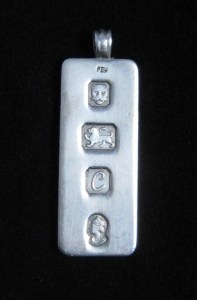
Is there a fast way of dating cameo jewelry?
Generally speaking, the quickest way is to look at the quality of the carving. Smooth and beautifully detailed cameo’s tend to be pre-1920s, whilst ‘sharper’ crudely carved cameos are post 1940s. Roman mythology cameos are usually 18th to 19th Century, while pretty side profile portraits of young women with shorter or ponytail hair tend to be 1960s onward (though any type of male portrait tend to be 18th to 19th Century, just to confuse things). Pictorial / rural picture scenes are generally 19th to early 20th Century. Please note these are general guidance only, and not hard rules (eg, there are some modern cameos which are so well carved they look Victorian). If it’s a cameo brooch, I’ve written a photo guide on How To Date A Vintage Brooch, which may help.


Thank you so much for this question, it’s given me a good blog post inspiration to do a quick-glance photo guide to dating cameos 🙂
How do you make micro mosaic jewellery?
Very briefly, tiny tiles (or tiny uniform pieces snapped off thin lampwork glass rods), are placed in a setting that has a strong glue or cement base in it, to form a picture such as flowers. Once everything is set and the glue/cement has dried, a type of grouting is placed over the tiles to secure them in. Unlike most other jewellery, micro mosaic making processes tend to be close guarded secrets, though these Youtube videos here and here may hopefully help further.
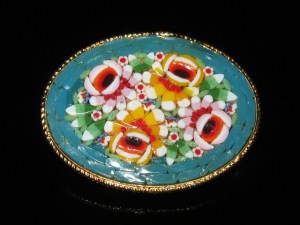
Proper supplies are almost impossible to get hold of – I’ve found that searches for micro mosaic tiles only bring up ‘small’ tiles, not the proper tinier micro mosaic jewellery ones. When I was planning on having a go at making micro mosaic jewellery myself a few years ago, the nearest tiles I could find were sold by this supplier who offers a range of Smalti tiles, (I planned use glass nippers to try and cut them even smaller). I never ended up getting round to making traditional micro mosaic jewellery as I didn’t have the time, but if anyone does, please do let us know how you get on, I’d certainly be fascinated 🙂
If you’re not too concerned about keeping to the ‘traditional’ methods of using glass tiles, but are more interested in the final effect of micro mosaic jewellery, I’ve seen some absolutely stunning examples people have made from polymer clay. Glass seed beads set sideways (so you can’t see the hole) may also be an alternative to experiment with.
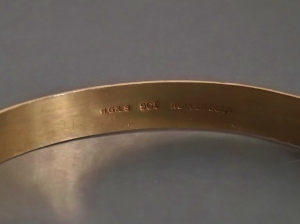
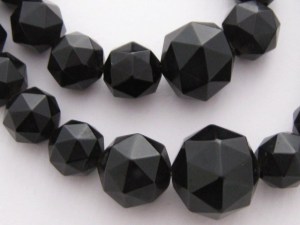

I have a vintage Delft brooch, is it worth anything?
Whilst a lot of people do collect Delftware, the jewellery has unfortunately never really been worth that much, which is as shame because it’s really pretty. Generally speaking, I’ve found that vintage Delft brooches sell for between £3 and £10 ($5 to $12 USD), though once or twice I’ve seen them sell for around the £20 mark ($25 USD) – this is not a valuation, just what I’ve personally seen them sell for over the years.






‘
I hope you have found these months Q and A helpful, and as always please do get in touch if you have any jewellery queries, need help or just want to say hi! Many thanks for stopping by 🙂
‘
References and further reading:
‘
Language of Flowers lists:
http://www.daleharvey.com/Directory/articles-of-interest/LANGUAGE+OF+FLOWERS/Meaning+of+Flowers.html
https://artofmourning.com/2010/12/26/symbolism-sunday-the-grape/
http://www.langantiques.com/university/Symbolism_in_Jewelry
‘
Antique mythology cameos ID and information:
(Scroll down) http://www.langantiques.com/university/Symbolism_in_Jewelry
‘
Making micro mosaic jewellery
Tile supplies: http://www.mosaicsupplies.co.uk/product-category/micro-tiles/
Making a micro mosaic pendant (using Fimo clay to set the glass tiles): https://www.youtube.com/watch?v=CDYPe07LIHU
Examples of some fabulous modern micro mosaic fine jewellery: https://4cs.gia.edu/en-us/blog/magic-micro-mosaic-jewelry/
